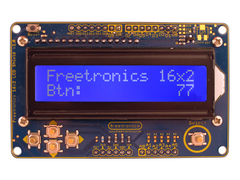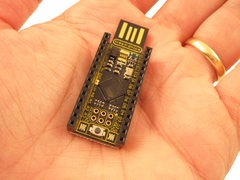Mark Wilson was looking to emulate an original piece of computer history, and decided on the Kenbak-1. From Wikipedia:
The Kenbak-1 is considered by the Computer History Museum and the American Computer Museum to be the world's first "personal computer". Only 40 machines were ever built and sold. It was designed and invented by John Blankenbaker of Kenbak Corporation in 1970, and was first sold in early 1971. The system first sold for US$750. Only around 10 machines are now known to exist worldwide, with various collectors. In 1973, production of the Kenbak-1 stopped as Kenbak Corporationfolded.
Although it is not a exact replica, Mark has done a fine job and included a few extras, such as a real-time clock. However the casing and input method is fantastic, and makes you realise how far technology has evolved in the last few years. Here is a short demonstration:
For mroe information, including wonderfully-documented code and images - visit Mark's website. With plenty of I/O for LEDs and switches, combined with an easy to use language - an Arduino can be used to emulate all sorts of things. For maximum possibilities, consider using our Freetronics EtherMega - with 51 digital I/O pins, onboard Ethernet, microSD card socket and optional PoE you'd be off to a powerful start:

























